COPYRIGHT © NATIONAL DESIGN ACADEMY
When you work in a specific profession for a long time, you get to have an insider’s view of the industry and be up to speed with all its latest developments and trends. Specifically looking at furniture design, we wanted to know exactly what it takes for a piece of furniture to stand out from the crowd and catch the discerning eye of an expert.
We caught up with our course tutor and award-winning furniture designer Rock Galpin to get an idea of what he’s finding particularly exciting in the industry today. Here are his top five picks for what’s currently shaking up the world of furniture design.

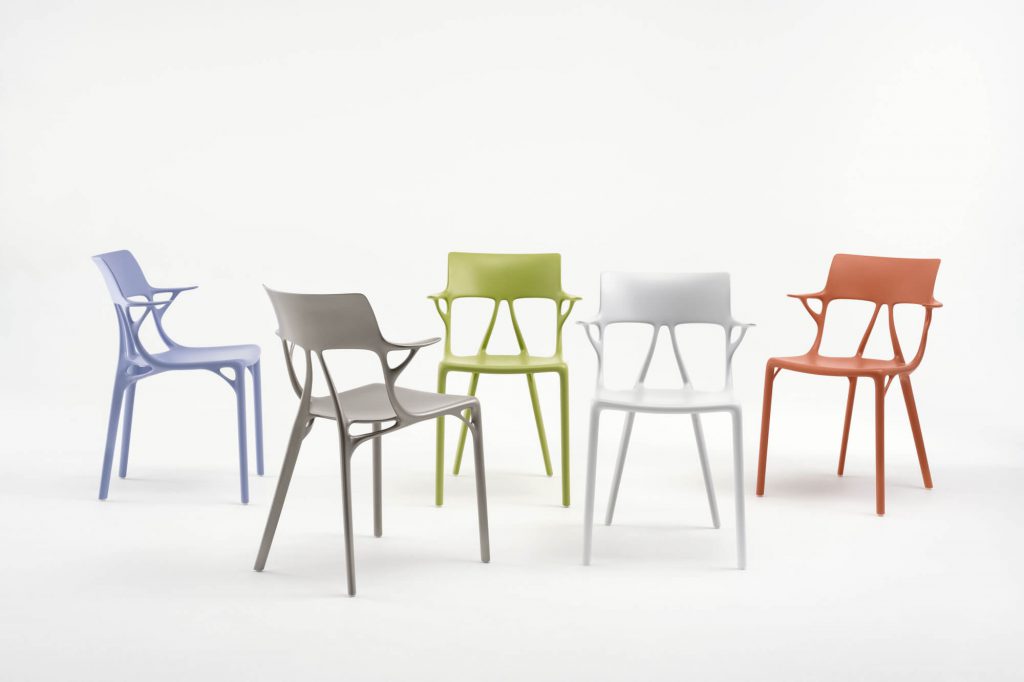
As with many other industries, one of the most fascinating developments in furniture design is AI, or Artificial Intelligence. AI is being used to generate new furniture concepts that are based on different merits of structure, material, efficiency, or complexity from what a designer would normally consider. As furniture designers, we can combine our creative thinking and natural intelligence with artificial intelligence so that we can move in exciting new directions.
‘Generative Design’ is allowing furniture designers to input their goals into a software program that then makes suggestions which are tested and learned from to come up with more successful iterations. By using AI, a designer can approach design differently, without the limitations of former biases and experiences.
This chair – designed by Philipe Starck and considered to be the first chair created with AI – was created out of a brief given to the AI to suggest a design that can support human weight with minimum material and energy involved. The design process, involving both designer and AI, went through several iterations that evolved to the final piece.

Another exciting part of incorporating AI in furniture design is that many of the free-form designs generated by AI that could not be created using traditional manufacturing methods can now be created through 3D printing. Wood-based filaments in 3D printing are also enabling new forms and shapes for wood-based furniture that were never possible before.
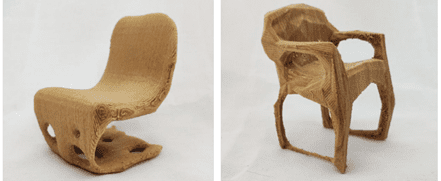
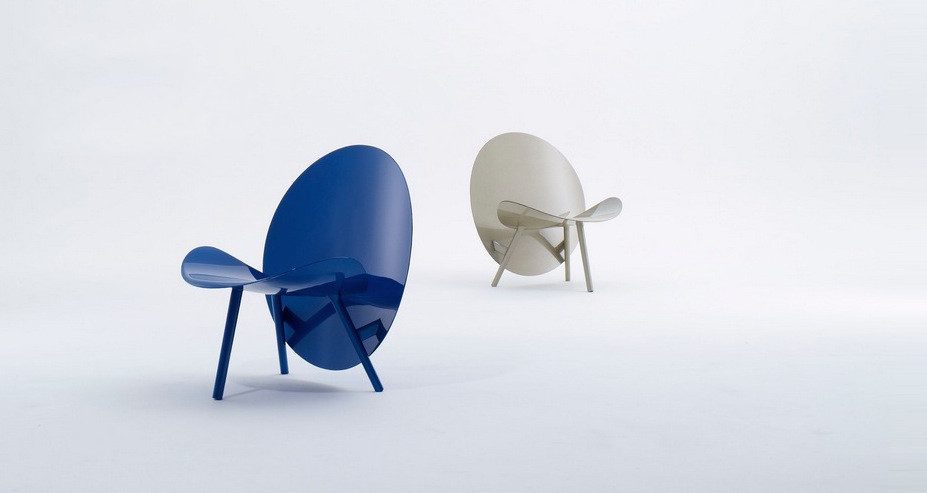
Looking at the Halo Chair design by Michael Sodeau you may be surprised to hear that furniture designers and F1 car designers sometimes work with the same materials. Furniture designers today are borrowing materials from other technical industries and combining them with others to design lighter weight furniture with added strength and durability.
The production of carbon fibre, which started as a material for F1 race cars, has now advanced to a point where, with advanced production methods, it can be used to create furniture pieces that really stand out from the crowd. Its thin form and modern minimal design are possible thanks to the strength of this unconventional material. Sodeau created the Halo Chair alongside Hypetex, the world’s first supplier of coloured carbon fiber, enabling him to offer a vivid colour palette in this ultra-light material currently being utilised by F1 teams for advanced aerodynamic properties. Naturally, being a furniture designer, I think this chair’s uses the material much more effectively and its looks rival that of a Ferrari!
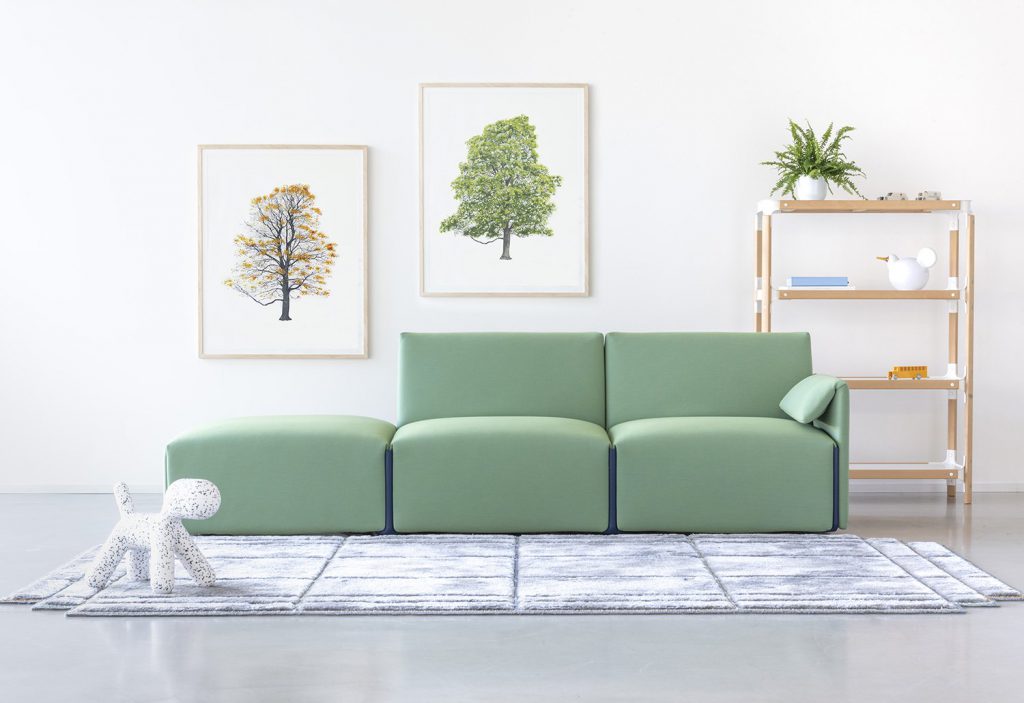
Many sofa designs claim to be modular but often fall short of the true definition. The idea of furniture changing with the user’s needs is nothing new, but this sofa really stands out for me because it pushes this concept to a different limit.
The Costume modular sofa is a very clever piece of design because it so easily adapts to changing needs. It comes in a variety of colour and accent combinations, so it’s very customisable. But what’s unusual about it is it can be assembled and dismantled in minutes by the user to be reconfigured in a new way. This is practical furniture design at its best.
It’s been designed in a way to allow for easy replacement of its different parts, with no permanent fusion used in its construction…and this also adds to its sustainable design approach that involves using recycled plastic in its manufacturing.
The sofa has an easy to remove washable cover that can increase the product lifespan or reinvigorate the user’s enthusiasm with a fresh new colour, both of which enable a longer user-product relationship.

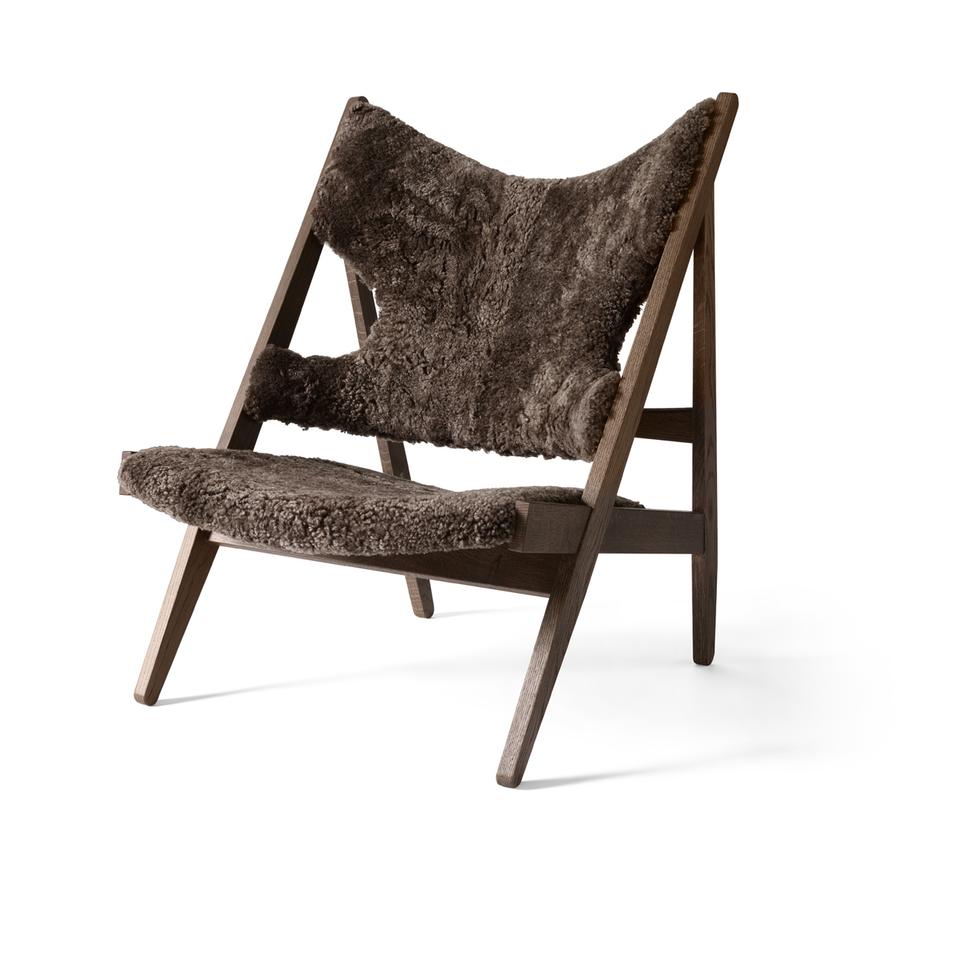
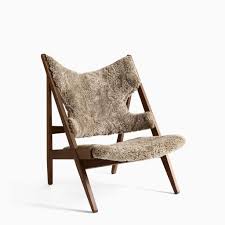
Knitting Lounge Chair by Ib Kofod-Larsen for MenuSpace. Photo credit: menuspace.com
The knitting lounge chair – This piece of furniture design really strikes a chord with me because it has that beautiful balance between craft, quality materials and a relaxed nomadic style. It harks back to a pared down organic simplicity, with the retention of a strong personality and mid-century style.
The chair was first designed in 1951 and named for its elbow cut-outs that offer a comfortable seat while knitting (or reading). Its back is angled for a relaxing posture and it curves round the user.
It has now been reinterpreted in a contemporary way, using popular materials. I particularly like the version with sheep skin, which is a soft and comfortable material that envelops the user, and its walnut and oak frame options that add to its warm and natural look.
The fact that the chair looks good from all angles, along with its comfort and natural high quality materials, make it a timeless furniture design for me.
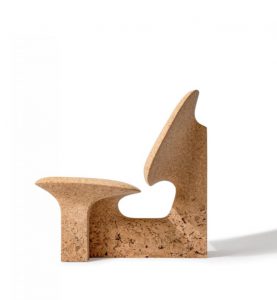
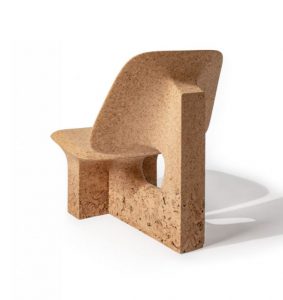
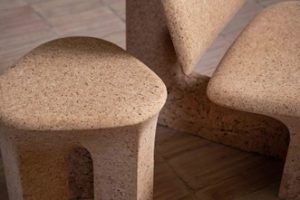
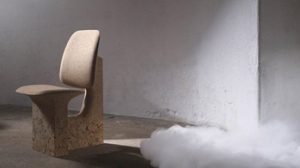
Furniture made from cork usually looks good, but pieces made from burnt cork have another layer of beauty to them. The design and production of this furniture collection involves a material that in my opinion has up to now never been so elegantly interpreted.
The darkened tones and accentuated texture of burnt cork used in the furniture bases are gradually blended in with the natural cork used towards the top. The elegant form, soft rounded edges, nuances in texture in these chairs and tables make this collection a truly beautiful design.
The fact that, by default, cork has a natural firm cushioning quality, suggests these are comfortable pieces to interact with. Cork also has the advantage of being very sustainable, as a replenishable by-product of tree growth. But I appreciate these pieces even more when I consider the fact that they’re made using burnt and discarded cork that would have otherwise been wasted.
And whilst cork is waterproof, can be moulded, pressed and machined, it does not typically lend itself to thin unsupported edges and forms, so this collection also appears to be pushing the boundaries of the material and furniture design.
Have you always been interesting in the field of furniture design? We’ve worked with industry expert and award-winning designer Rock Galpin to compile the ultimate guide to becoming a furniture designer. Read our ten steps for success on our blog.
Our admissions team will be happy to discuss your options.
COPYRIGHT © NATIONAL DESIGN ACADEMY